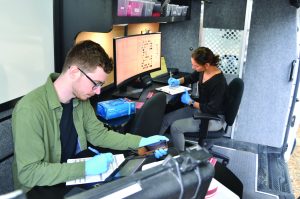Español Français Português عربى |

As we find ourselves providing public safety in the complex setting of a continuing pandemic in 2022, it is impossible to avoid the growing nexus with technology on so many levels, as it enables, constrains, and even defines our police agencies and the communities we serve.
This is a consideration for professional policing that has both broad and deep implications that rapidly and constantly change. We encounter technology and the resulting data created in small devices worn on a wrist; in the indispensable mobile phone nearly all of us carry, in smarter and better-connected vehicles; and in homes or offices that now allow for intelligent and automated lights, locks, water, appliances, and security.
It is getting difficult to envision a police interaction where technology at one or many of these levels is not present and potentially relevant. The question we must ask ourselves is how exactly will our agencies employ an array of tools and technologies? How will we benefit from the wide variety of data generated by our communities and businesses to create policing efficiency and the needed capability to effectively investigate any crimes that increasingly exploit that same technology to victimize our communities?
It is not uncommon to see the term cybercrime broadly applied to describe such criminal activity without delineation between cybercrime and cyber-enabled crime. For communities and citizens, it is simply crime, about which they turn to their local police agencies for help. For those agencies, it is a complicated, growing, and changing domain that challenges many of us to develop and maintain an array of technical, investigative, and forensic competencies.
“For communities and citizens, it is simply crime, about which they turn to their local police agencies for help.”
Simultaneously, we must recognize that the citizens we serve increasingly perceive police technology and police access to an array of available data to be potentially intrusive, and that demands transparent privacy controls and oversight safeguards, not only in agency policies but also in practice. This is an important part of the trust we build and maintain with those we serve. It requires deliberate and ongoing efforts on our part to be successful. We must not only message what we do to achieve this goal, we should also herald it every chance we get, via local government, community associations, and our civilian or community academy-like programs. At the core of trust is the ability to demonstrate responsible use, regular oversight and recordkeeping, identification of deficiencies, and resulting remediation.

In this cybercrime-focused issue of Police Chief, you will find articles that are technical. Some address policy, and some address forensic or investigative processes. Moreover, all of them seek to equip our members to effectively and properly consider how to move their agencies forward, to not only benefit from the many technologies and tools promising to enhance policing but to provide a foundation for the sustained proper use of these technologies and available data in a manner that leads to the development of awareness, understanding, trust, and transparency between the agencies and the communities they protect. d


